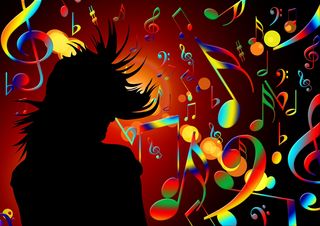Memory
(Un)forgettable: Memory Tripping with One-Hit Wonders
A replay of a Top-40 Countdown is an unexpectedly powerful trigger of nostalgia.
Posted November 13, 2017

On a long, tedious drive across the state recently, I got tired of listening to the playlists on my phone and switched to the radio. Flipping through the channels, I suddenly landed on a song that I had quite literally forgotten ever existed, having never once heard it in all the years that have passed its brief period of popularity back when I was in college. Like practically everyone else in America during the few weeks of the song’s popularity, I enjoyed hearing it whenever it came on the radio, but once it dropped off the chart, the song—along with the one-hit wonder who produced it—vanished without a trace from the popular music landscape. In all the time that has passed since then, I never once gave the song a thought, yet hearing it again after all these years gave me a sudden, powerful neurotransmitter rush of nostalgia.
When the song was over, I was treated to another echo from the past in the voice of Casey Kasem, former host of the long-running radio show American Top 40, which I listened to religiously through my high school years, and whenever I could during college. It turned out that the station I had tuned into was replaying an entire broadcast of AT 40 from a random Sunday of a random year during the time in which I happened to be in college. I listened to the show until I lost the station, but for the rest of my trip I couldn’t help pondering the experience and wondering why such a forgettable song could produce such a powerful emotional reaction in me upon hearing it again. And then it occurred to me that its very forgettability might play a key role in the impact it had upon me. Recent research on memory supports this hypothesis, and in fact suggests that a forgettable hit from a one-hit wonder is a nearly perfect trigger for nostalgia. A chance encounter with a forgotten song from one’s forgotten past contains three key ingredients for a positively potent—and potently positive—memory experience.
The first ingredient is the power of music itself as a positive memory trigger. Brain imaging studies reveal that hearing a piece of music co-activates a number of different regions in our brains including—for those songs that appeal to us—pleasure circuitry that treats us to a dose of dopamine, serotonin, and other feel-good neurochemicals. Hearing any song that we like produces this positive response in our brains, but those songs that we first encountered in our teens and early twenties produce an especially powerful reaction. Because our brains are undergoing such rapid neurological development between the ages of twelve and twenty-two, the songs we hear during that period create enduring memory traces that, because of the hormonal changes we are also experiencing during those years, are tagged with heightened emotions. Hearing any song from that period of our lives, such as the one-hit wonder I encountered on my drive, will produce a disproportionately powerful emotional response in us.
The second key ingredient of my encounter with the forgotten song is the involuntary nature of the memories associated with it. Research on autobiographical memory reveals that memories from our past that are triggered spontaneously by cues in our external environment pack a more powerful emotional punch than memories that we voluntarily seek and retrieve. To willfully dredge up the memory of a special day from our school years allows us to experience some of the emotional pleasure associated with it, but to have that same memory triggered spontaneously while we are just going about our business produces a far greater positive impact upon our mood. Similarly, seeking out and playing one of our favorite old songs on Spotify will always trigger the positive emotions associated with it, but those emotions are far more intense when we hear that song unexpectedly on the radio, or perhaps even on an ambient music loop in a clothing or grocery store. The very fact that it is one of our favorite old songs, however, makes it far more likely that our next experience with it will be voluntary rather than involuntary. Because the song I heard on my long drive dropped out of the public’s memory when it dropped off the charts—not even being memorable enough to be dug up occasionally and played as an “oldie,” I had no conscious memory of it, and therefore no way of voluntarily seeking it out. Any future encounter with the song would have to be unbidden, making the autobiographical memories it triggered completely involuntary and therefore more emotionally charged than the same memories would have been had I sought out the song on purpose.
The third ingredient involved in the experience is “chronological remoteness,” or the span of time separating the present moment both from a remembered past experience and, crucially, from our most recent retrieval of the memory of that experience. When we recall a pleasant memory from our distant past, the pleasurable emotions associated with the experience are reactivated in the present even if we have retrieved that memory many times, as we often do with our favorite memories. If that distant memory happens to be one that we have never recalled before, however, the pleasure we experience is twofold for, in addition to reactivating previously experienced emotions, the unrecalled memory activates areas of the brain associated with novelty detection. A large body of research suggests that our brains are “hardwired” to respond positively to novelty, with our dopamine levels increasing whenever we encounter something new, so a chance encounter with a memory we have never retrieved before rewards us with both the reactivation of pleasurable emotions from our past and the activation of a pleasurable response to the unanticipated present experience of that past. Because the song I heard on the radio had not crossed my mind in all the years since it dropped off the charts, the memories that it triggered had a high degree of chronological remoteness, causing my brain to respond pleasurably to it as both something old and familiar, and as something new and unexpected.
Involuntary memories are the most potent source of nostalgic experience. Unfortunately, since they are involuntary, we can’t call them into our consciousness on command (otherwise, they wouldn’t be involuntary). The only way to have any sort of control whatsoever in retrieving the involuntary material out if which nostalgic experience is made is to trick ourselves into stumbling upon a memory trigger with which we are familiar, but which we have not thought about since our youth. The brief shelf-life and long-term forgettability of a number of the songs which are popular at any given time makes a countdown of the hits from some random week from our youth a perfect source of such potential triggers. Luckily, a number of such countdowns are archived on YouTube, so if you’d like to venture down a forgotten path where you might accidentally-on-purpose stumble upon a powerful trigger of involuntary memory, Casey Kasem, Dick Dees, and Ryan Seacrest are there to lead the way. An aural excursion into your forgotten past is available with a single click of the “play” button.
References
Berntsen, D., and N. M. Hall. “The Episodic Nature of Involuntary Autobiographical Memories. Memory and Cognition (2004), 32 (5), 789-803.
Cooper, Belle Beth. “Novelty and the Brain: Why New Things Makes Us Feel So Good.” Lifehacker. Lifehacker.com, 21 May 2013.
“Nervous System Research; Findings from Tokyo Metropolitan University Yields New Data on Neuroscience (Memory and Reward Systems Coproduce ‘Nostalgic’ Experiences in the Brain).” Pain and Central Nervous System Week, 19 September 2016.
Stern, Mark Joseph. “Why Are We So Nostalgic for Music We Loved as Teenagers?” Slate Magazine, 12 August 2014.


